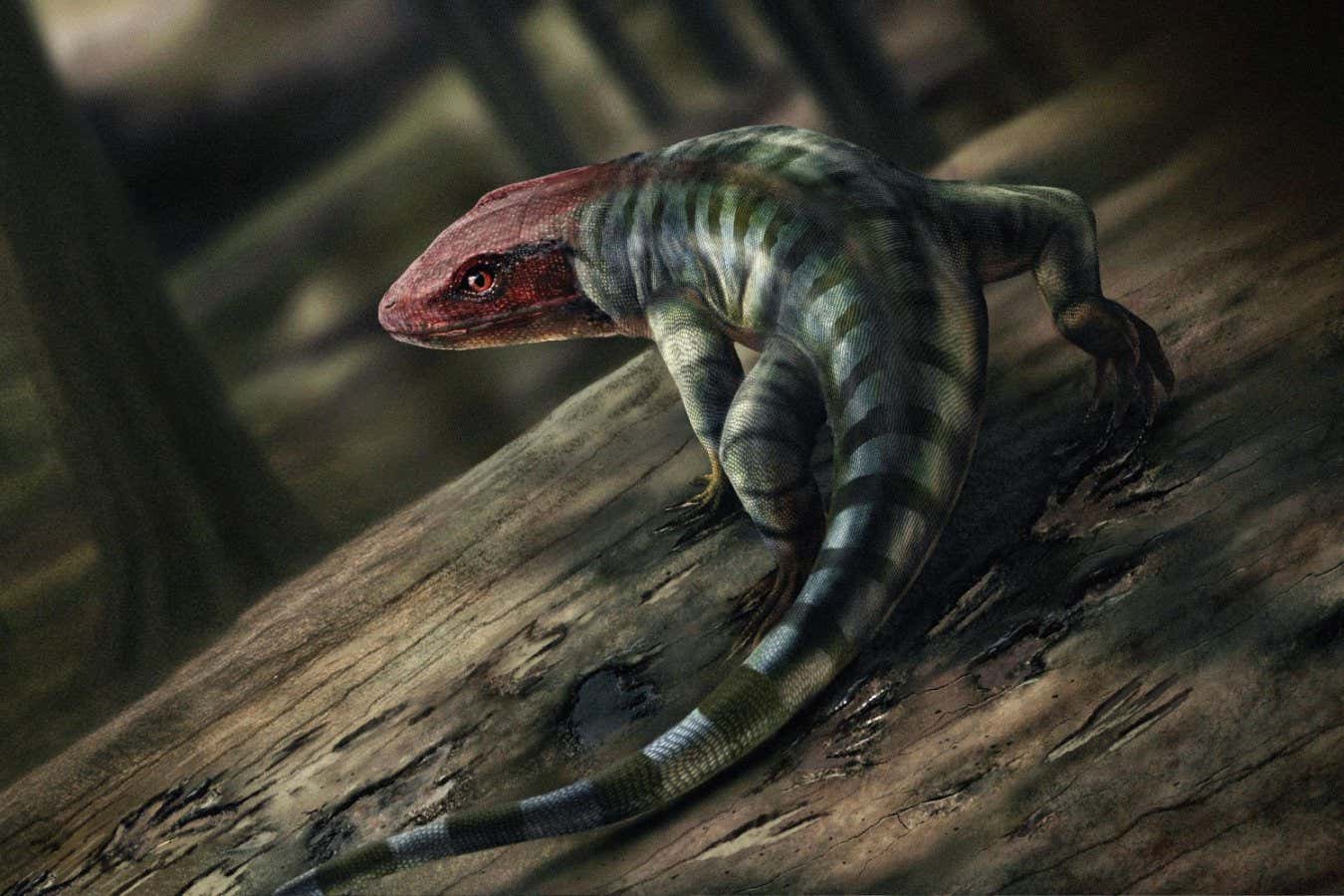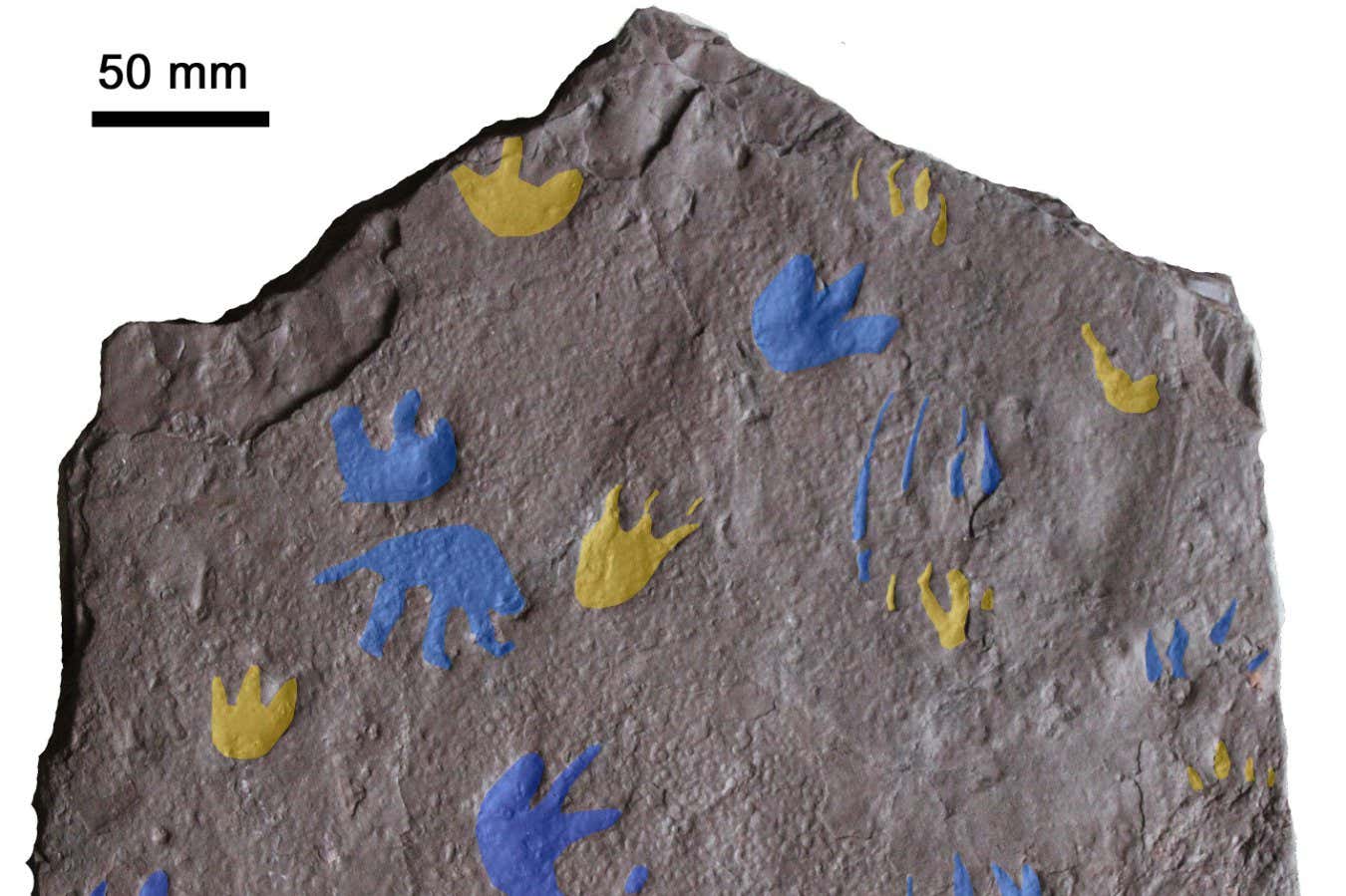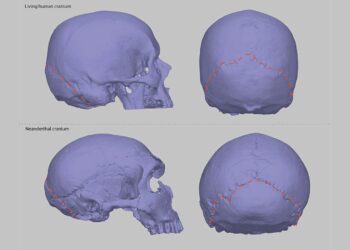
An artist’s impression of the lizard-like creature making tracks
Marcin Ambrozik
Evidence of the earliest known reptile-like animal, an ancestor of many four-limbed creatures including birds, reptiles and mammals, has been found in Victoria, Australia. The discovery could push back the timing of when these animals began to emerge from the water to live solely on land, one of the most important evolutionary events of life on Earth, though not everyone is convinced.
In 2021, a pair of amateur fossil enthusiasts exploring the banks of the Broken river, near Mansfield, Victoria, found a slab of sandstone, around 40 centimetres across, with three sets of tracks that appear to have been made by the same species of tetrapod – or four-legged animal. Two of the sets show signs of five digits, with curved claws.
The fossil was brought to the attention of John Long at Flinders University in Adelaide, Australia, and his colleagues, who dated the slab to around 356 million years ago. This is more than 35 million years earlier than the previous oldest clawed fossils, which were found in Nova Scotia, Canada.
“We can see beautiful, five-fingered hands and hooked claws in these new trackways,” says Long. These are a “dead giveaway” that this was an amniote, or creature whose young develop inside amniotic fluid, he says. This category includes those that grow inside an egg, as with reptiles, or inside the body, as in mammals, including humans.
It also rules out the possibility that the animal was an amphibian, says Long. The first four-legged land animals are thought to have been amphibians, but their young would have had to pass through a larval stage, forcing them to return to water rather than living out their whole life cycle on land. “None of the early amphibians have well developed claws at the end of their fingers and feet,” he says.
That means the fossil tracks are likely to be the earliest known example of a reptile living on land, says Long. “This was a very big turning point in evolution because, with a hard shell egg, amniotes weren’t bound to go back and reproduce in water,” he says. “Instead, they could invade dry land, invade continents.”

The fossil tracks show front foot prints (in yellow) and rear footprints (blue)
Grzegorz Niedzwiedzki
Other evidence suggesting that the tracks were made on land, rather than in water, is that the small slab is pocked with raindrops, says Long. While the researchers are still being cautious, they are “99 per cent sure it is an early reptile”, he says.
Blake Dickson at the University of New South Wales in Sydney says he is convinced from the images and analysis that the fossils were made by animals with claws. “This is the earliest evidence of advanced terrestrial locomotion that we know about,” he says.
However, two trackway researchers, Steven Salisbury and Anthony Romilio, both at the University of Queensland, Brisbane, say that, while the new fossil is undoubtedly an important find, they have questions about whether the claws are true claws rather than just pointed digits.
“This discovery is hanging by the claws,” says Romilio. “They are relying on them being claw marks to carry their case forward. If they are claw marks, then hats off to them, as that would be extraordinary to have such a find.” Long says he believes it is “clear” the footprints have claws.
Salisbury also says that just because raindrops are recorded on the slab when the surface was exposed to air doesn’t mean that the tracks were definitely made at that same time, as water levels could have come and gone.
In response, Long says: “We show that raindrops fell and left impressions on the surface. Then the creatures walked across it, leaving crisp prints over the raindrops. Raindrops are hard to preserve underwater, after a flow of water as the river rises.”
Topics:
Source link : https://www.newscientist.com/article/2479817-fossil-tracks-rewrite-history-of-animals-leaving-water-to-live-on-land/?utm_campaign=RSS%7CNSNS&utm_source=NSNS&utm_medium=RSS&utm_content=home
Author :
Publish date : 2025-05-14 16:00:00
Copyright for syndicated content belongs to the linked Source.














